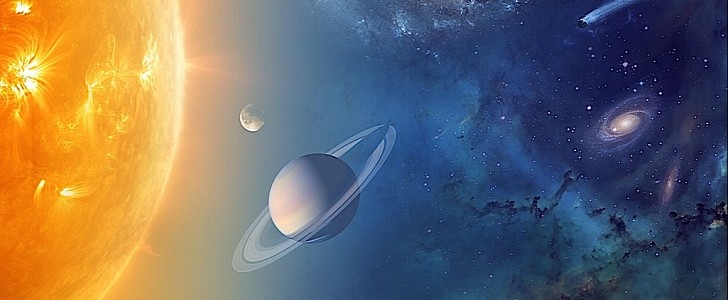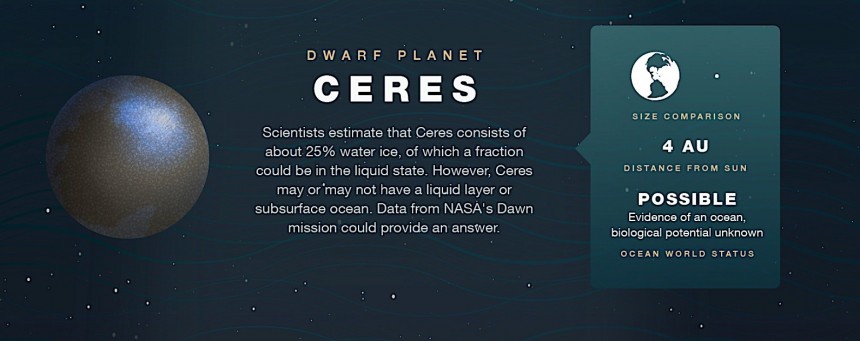Life is a very complex condition of matter, one that as far as we know only came to be here on this planet planet. Chances are, of course, it’s abundant in the Universe, only we haven’t been able to detect it.
There are a number of ingredients that have to be present on a planet to give birth to life as we know it, based on carbon. Chemically, there’s got to be carbon (duh!), nitrogen, phosphorus, sulfur, among others. You also have to have a sun just at the right distance away from the planet, enough asteroid stability in the region to safeguard the existence of life, and enough time for all of those chemical elements to come together in just the right way.
There are however two elements that not only have to be present separately, but must also combine to form water. In fact, this liquid that comes to be thanks to the relationship between hydrogen and oxygen, is perhaps the most important one for the existence of life, again, as we know it.
Until not long ago, although we knew of the existence of hydrogen and oxygen out there, people have been reluctant in saying for sure water is a given in our solar system, let alone the Universe. Yet now, NASA not only acknowledges the existence of water, it said from as far back as 2015 “the Solar System and beyond is awash” in it.
According to the agency, its missions deep into the solar system “have provided a wave of amazing findings related to water in recent years,” giving the people doing this for a living hope “we may very well finally answer whether we are alone in the solar system and beyond."
Although direct observation of water has not been achieved so far, NASA says signs of it are everywhere, from the giant molecular clouds between the stars to the disks of material of newborn planetary systems, and in the atmospheres of giant planets.
Generally speaking, water is only present in the form of either ice or vapor, but there are a few places out there we know of with a degree of certainty to possess liquid water under the surface, like Ceres, a dwarf planet located in the Asteroid Belt, and some of the moons of Jupiter and Saturn, namely Ganymede, Europa, Callisto, Enceladus and Titan.
Closer to home, in places that are utterly hostile to life, like the first planet from the Sun, Mercury, signs of water were discovered in permanently shadowed craters. The same kind of locations on the Moon are thought to contain it as well.
Mars, the planet that is without a doubt the one we’ll be visiting first, as a race, once we’re capable, had abundant water sometime in the past – studies show it had enough water for an ocean one mile deep (1.6 km), and large enough to occupy half of the northern hemisphere.
Although it lost all of the thing in liquid form, some of it remains as ice at the poles, and possibly even underground.
So, what does the knowledge of that much water being available all over the place does for us?
First, NASA says finding water distributed like this helps us better understand how everything around us, even Earth, formed 4.5 billion years ago.
Then, given how it’s believed the solar system was extremely hot in its early days, preventing water from condensing into a liquid, it’s probable water was brought here by asteroids and other pieces of floating rocks. This can only mean it existed elsewhere before Sol came to be.
Knowing where water is will also help us plan future missions, because ultimately our goal for space, at this moment in time, is not colonization, but exploration. These missions, like most of them currently on Mars, will be specifically tasked with finding life, in whatever form.
You can check the attached gallery for a closer look at the worlds here in our Solar Systems NASA believes harbor plenty of water.
There are however two elements that not only have to be present separately, but must also combine to form water. In fact, this liquid that comes to be thanks to the relationship between hydrogen and oxygen, is perhaps the most important one for the existence of life, again, as we know it.
Until not long ago, although we knew of the existence of hydrogen and oxygen out there, people have been reluctant in saying for sure water is a given in our solar system, let alone the Universe. Yet now, NASA not only acknowledges the existence of water, it said from as far back as 2015 “the Solar System and beyond is awash” in it.
According to the agency, its missions deep into the solar system “have provided a wave of amazing findings related to water in recent years,” giving the people doing this for a living hope “we may very well finally answer whether we are alone in the solar system and beyond."
Generally speaking, water is only present in the form of either ice or vapor, but there are a few places out there we know of with a degree of certainty to possess liquid water under the surface, like Ceres, a dwarf planet located in the Asteroid Belt, and some of the moons of Jupiter and Saturn, namely Ganymede, Europa, Callisto, Enceladus and Titan.
Closer to home, in places that are utterly hostile to life, like the first planet from the Sun, Mercury, signs of water were discovered in permanently shadowed craters. The same kind of locations on the Moon are thought to contain it as well.
Mars, the planet that is without a doubt the one we’ll be visiting first, as a race, once we’re capable, had abundant water sometime in the past – studies show it had enough water for an ocean one mile deep (1.6 km), and large enough to occupy half of the northern hemisphere.
So, what does the knowledge of that much water being available all over the place does for us?
First, NASA says finding water distributed like this helps us better understand how everything around us, even Earth, formed 4.5 billion years ago.
Then, given how it’s believed the solar system was extremely hot in its early days, preventing water from condensing into a liquid, it’s probable water was brought here by asteroids and other pieces of floating rocks. This can only mean it existed elsewhere before Sol came to be.
Knowing where water is will also help us plan future missions, because ultimately our goal for space, at this moment in time, is not colonization, but exploration. These missions, like most of them currently on Mars, will be specifically tasked with finding life, in whatever form.
You can check the attached gallery for a closer look at the worlds here in our Solar Systems NASA believes harbor plenty of water.













